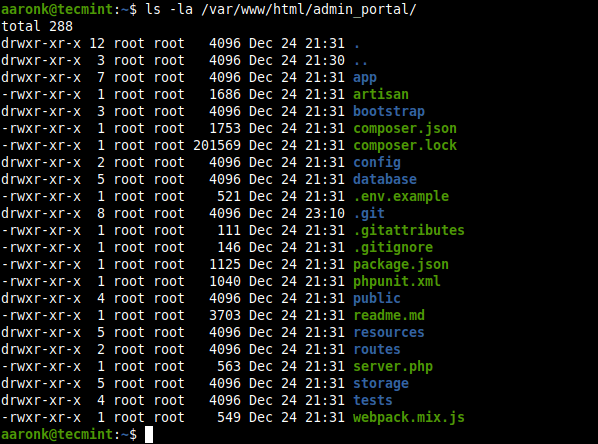
- #PYTHON LIST DIRECTORY CONTENTS RECURSIVELY HOW TO#
- #PYTHON LIST DIRECTORY CONTENTS RECURSIVELY GENERATOR#
- #PYTHON LIST DIRECTORY CONTENTS RECURSIVELY FULL#
Users/krunal/desktop/code/pyt/output.txt Users/krunal/desktop/code/pyt/SciKit Learn.ipynb Users/krunal/desktop/code/pyt/TensorFlow.ipynb Users/krunal/desktop/code/pyt/NumPy.ipynb Users/krunal/desktop/code/pyt/MergeSort.java Users/krunal/desktop/code/pyt/help_examples.py Users/krunal/desktop/code/pyt/student.csv Users/krunal/desktop/code/pyt/example.http Users/krunal/desktop/code/pyt/DataScience.ipynb Users/krunal/desktop/code/pyt/person.txt Users/krunal/desktop/code/pyt/index.html The os.walk() function iterates of the directory tree at giving the path, and for each directory or subdirectory, it returns a tuple containing (,, ).įor (dirpath, dirnames, filenames) in os.walk(dirName): The python os module provides a walk() function to iterate over a directory tree.
#PYTHON LIST DIRECTORY CONTENTS RECURSIVELY HOW TO#
How to get a list of files in directory and subdirectories using os.walk()
#PYTHON LIST DIRECTORY CONTENTS RECURSIVELY FULL#
So, it will start iterate over one by one file and add its full path to the list, and in the end, we get our full list of files. Then we are creating a list and add the complete path of files. In the above code, we have defined a function called getFiles(), which accepts one argument called dirname. '/Users/krunal/desktop/code/pyt/app.cpp'] '/Users/krunal/desktop/code/pyt/sample.txt', '/Users/krunal/desktop/code/pyt/data.txt', '/Users/krunal/desktop/code/pyt/output.txt', '/Users/krunal/desktop/code/pyt/.vscode/settings.json', '/Users/krunal/desktop/code/pyt/SciKit Learn.ipynb',

'/Users/krunal/desktop/code/pyt/.ipynb_checkpoints/TensorFlow-checkpoint.ipynb', '/Users/krunal/desktop/code/pyt/.ipynb_checkpoints/DataScience-checkpoint.ipynb', '/Users/krunal/desktop/code/pyt/.ipynb_checkpoints/SciKit Learn-checkpoint.ipynb', '/Users/krunal/desktop/code/pyt/.ipynb_checkpoints/NumPy-checkpoint.ipynb', '/Users/krunal/desktop/code/pyt/info.log', '/Users/krunal/desktop/code/pyt/TensorFlow.ipynb', '/Users/krunal/desktop/code/pyt/NumPy.ipynb', '/Users/krunal/desktop/code/pyt/app.sql', '/Users/krunal/desktop/code/pyt/MergeSort.java', '/Users/krunal/desktop/code/pyt/help_examples.py', '/Users/krunal/desktop/code/pyt/data.json', '/Users/krunal/desktop/code/pyt/data.csv', '/Users/krunal/desktop/code/pyt/_pycache_/', '/Users/krunal/desktop/code/pyt/_pycache_/help_', '/Users/krunal/desktop/code/pyt/app.txt', '/Users/krunal/desktop/code/pyt/student.csv', '/Users/krunal/desktop/code/pyt/example.http', '/Users/krunal/desktop/code/pyt/ads.txt', '/Users/krunal/desktop/code/pyt/DataScience.ipynb', '/Users/krunal/desktop/code/pyt/app.json',

'/Users/krunal/desktop/code/pyt/person.txt',

'/Users/krunal/desktop/code/pyt/.DS_Store',

'/Users/krunal/desktop/code/pyt/demo.txt', ['/Users/krunal/desktop/code/pyt/index.html', It is obvious that fnmatch.filter is from the module fnmatch and not the built-in filter.CompletePath = os.path.join(dirName, file)ĬompleteFileList = completeFileList + getFiles(completePath)ĭirName = '/Users/krunal/desktop/code/pyt' Here it already becomes obvious why importing them like this is better (as far as readability goes). Python's official style-guide, PEP8, recommends using always 4 spaces. What is not quite a personal choice is the number of tabs per indentation level. I like to leave the names from os.walk the same as in the documentation, but this is a personal choice. # You can simply iterate over the generator: It should also expose the pattern for the filter as a parameter: import osĭef files_within(directory_path, pattern="*"):įor dirpath, dirnames, filenames in os.walk(directory_path):įor file_name in fnmatch.filter(filenames, pattern):
#PYTHON LIST DIRECTORY CONTENTS RECURSIVELY GENERATOR#
Your function could be a generator (which were introduced in Python 2.2).


 0 kommentar(er)
0 kommentar(er)
